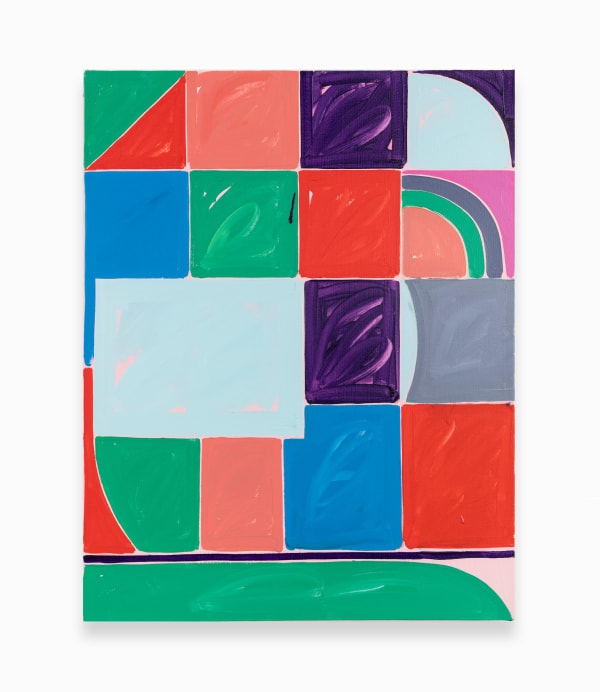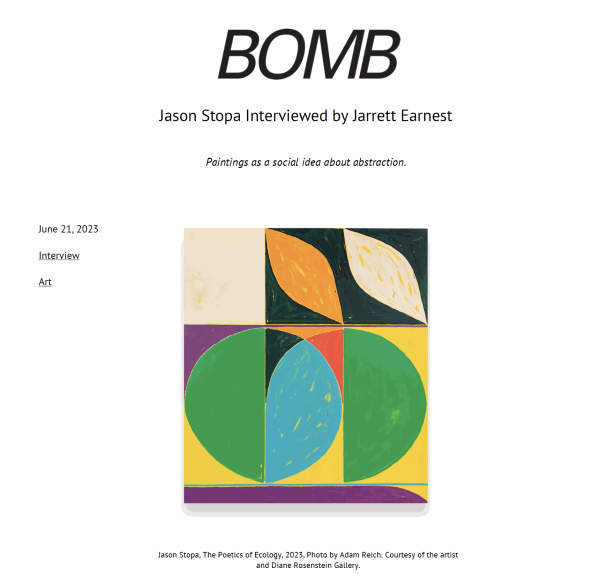Jason Stopa: Garden of Music
I’m an abstract painter. My paintings use architecture to reference utopias of all stripes: ecological, religious, and personal. Utopia is a kind of dirty word. It has a complicated history wrapped up in Modernism.
-

Jason Stopa at Schneider Museum of Art
2025年9月16日Jason Stopa's solo exhibition, Modern Language, will open Thursday September 25 at the Schneider Mus...继续 -
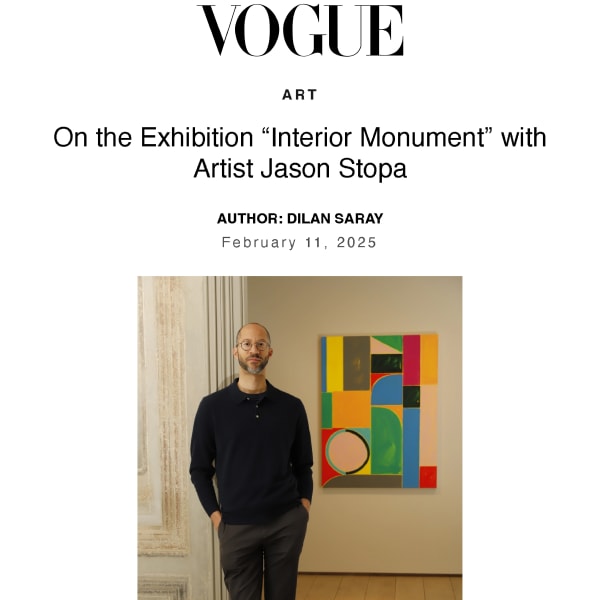
Jason Stopa in VOGUE
2025年2月11日Artist Jason Stopa is interviewed in Vogue-Turkiye on the occasion of his solo exhibition, Interior ...继续 -
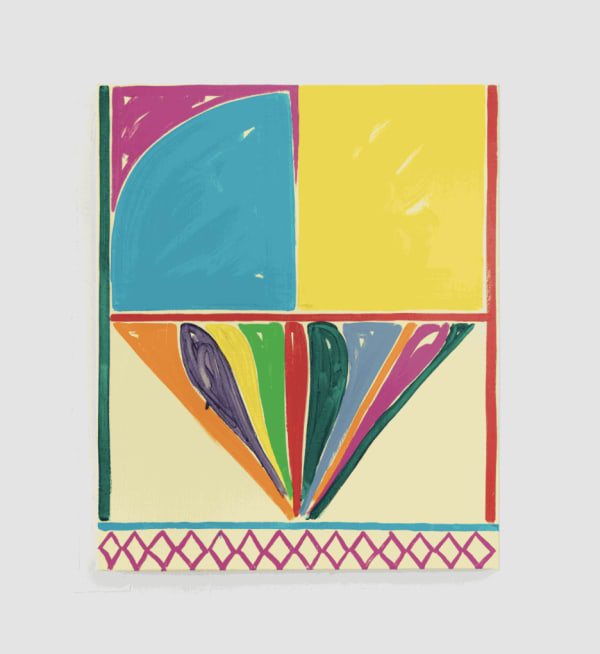
Jason Stopa in 2024 White Columns Benefit Auction
2024年5月10日Jason Stopa has donated a painting to the 2024 White Columns Benefit Auction . Check out Lot 80 on t...继续 -
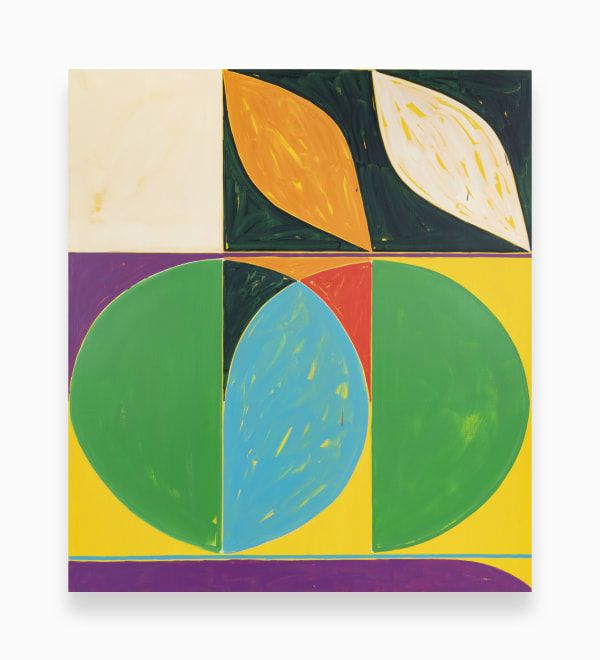
Jason Stopa interview in Bomb Magazine
Painting as a social idea about abstraction. 2023年6月21日Interview with Jarrett Earnest in Bomb Magazine centered around Jason Stopa's current solo exhibitio...继续
Diane Rosenstein is pleased to present Garden of Music, a solo exhibition of new, graphic abstract paintings by Jason Stopa. The artist paints archetypal forms with a lively color system that investigates notions of progress and utopia. This is Stopa’s first solo exhibition with Diane Rosenstein Gallery.
The exhibition takes inspiration from Bob Thompson’s painting “Garden of Music,” completed in 1960. Thompson’s painting depicts an idyllic, pastoral landscape with nude figures playing instruments. Color used here is saturated and spatial. Stopa is directly tied to the historical lineage of Thompson through his use of buoyant mark making and bright, thin washes.
Jason Stopa deconstructs shapes of modern architectural sites that occupy historical relationships to progress. He states, “ I see my motifs as structures that rest on lattice, sit on fences, and recline on slopes.” His paintings utilize the grid as an organizational logic by upholding rhythmic and playful repetition – allowing his mirroring of gestures to create a syntax. Brushstrokes are individually legible but accumulate to fill out gesturally articulated geometric structures. Each painting vibrates as if air - as well as light - were passing through the composition, animating it.
Matisse’s Chapel of the Rosary in Vence and Sun Ra’s house in Philadelphia are specific architectural sites referenced in Stopa’s paintings. The paintings Vence Chapel in Spring (2023) and The House of Sun Ra (2023) point towards possible Utopian futures. The geometry of each painting contrasts with the geometry of contemporary corporate architecture.
Stopa’s abstract painting language is both critical of our notions of progress and also opens up a horizon of possibilities. This horizon is what Edouard Glissant - the French writer, poet, and philosopher - would call 'creolization,' and in this way, Stopa’s work also reflects his identity as a mixed man. In a time of ecological crisis and political polarization, envisioning a new, possible world is at the epicenter of his paintings.


